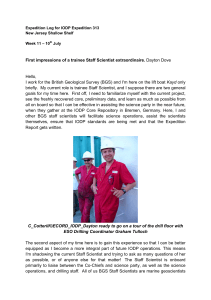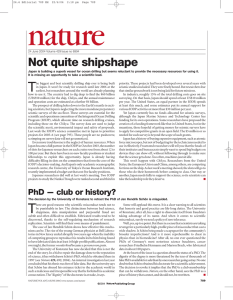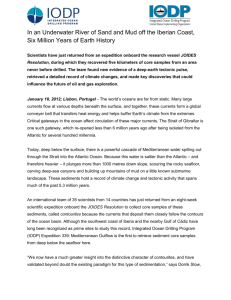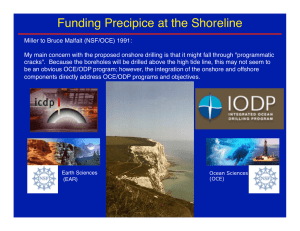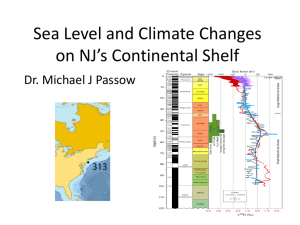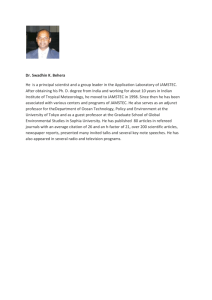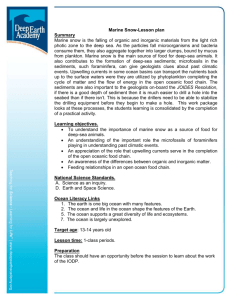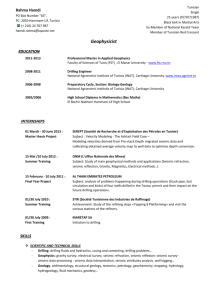Lord Howe Rise Science Workshop Summary Report
advertisement
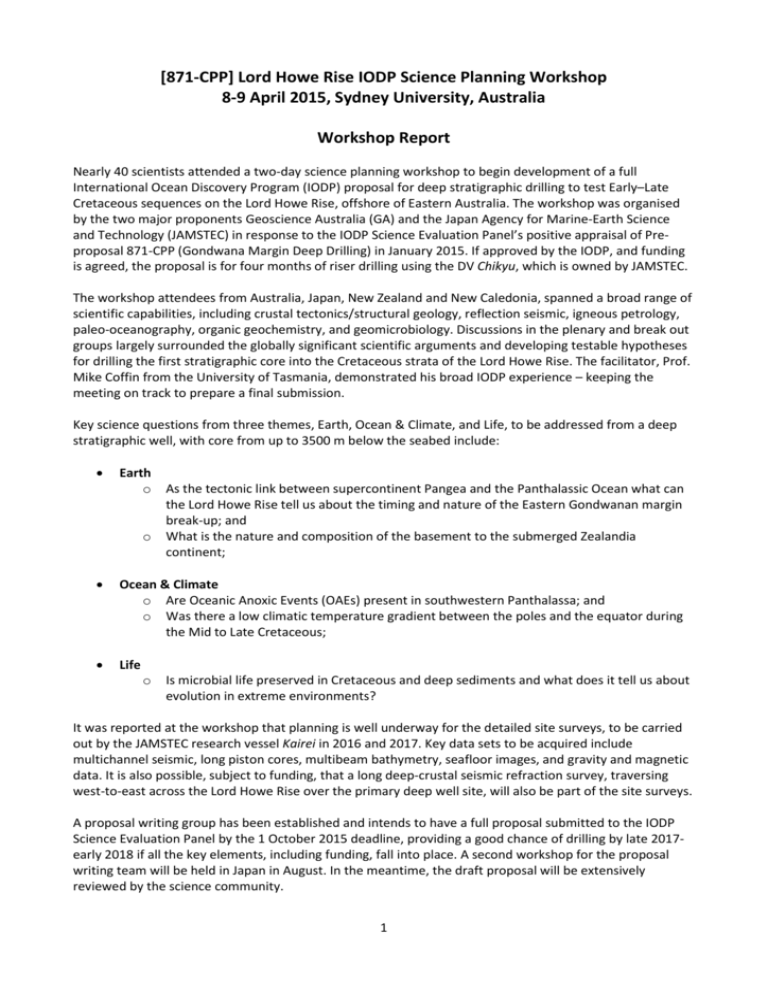
[871-CPP] Lord Howe Rise IODP Science Planning Workshop 8-9 April 2015, Sydney University, Australia Workshop Report Nearly 40 scientists attended a two‐day science planning workshop to begin development of a full International Ocean Discovery Program (IODP) proposal for deep stratigraphic drilling to test Early–Late Cretaceous sequences on the Lord Howe Rise, offshore of Eastern Australia. The workshop was organised by the two major proponents Geoscience Australia (GA) and the Japan Agency for Marine-Earth Science and Technology (JAMSTEC) in response to the IODP Science Evaluation Panel’s positive appraisal of Pre‐ proposal 871‐CPP (Gondwana Margin Deep Drilling) in January 2015. If approved by the IODP, and funding is agreed, the proposal is for four months of riser drilling using the DV Chikyu, which is owned by JAMSTEC. The workshop attendees from Australia, Japan, New Zealand and New Caledonia, spanned a broad range of scientific capabilities, including crustal tectonics/structural geology, reflection seismic, igneous petrology, paleo-oceanography, organic geochemistry, and geomicrobiology. Discussions in the plenary and break out groups largely surrounded the globally significant scientific arguments and developing testable hypotheses for drilling the first stratigraphic core into the Cretaceous strata of the Lord Howe Rise. The facilitator, Prof. Mike Coffin from the University of Tasmania, demonstrated his broad IODP experience – keeping the meeting on track to prepare a final submission. Key science questions from three themes, Earth, Ocean & Climate, and Life, to be addressed from a deep stratigraphic well, with core from up to 3500 m below the seabed include: Earth o o As the tectonic link between supercontinent Pangea and the Panthalassic Ocean what can the Lord Howe Rise tell us about the timing and nature of the Eastern Gondwanan margin break-up; and What is the nature and composition of the basement to the submerged Zealandia continent; Ocean & Climate o Are Oceanic Anoxic Events (OAEs) present in southwestern Panthalassa; and o Was there a low climatic temperature gradient between the poles and the equator during the Mid to Late Cretaceous; Life o Is microbial life preserved in Cretaceous and deep sediments and what does it tell us about evolution in extreme environments? It was reported at the workshop that planning is well underway for the detailed site surveys, to be carried out by the JAMSTEC research vessel Kairei in 2016 and 2017. Key data sets to be acquired include multichannel seismic, long piston cores, multibeam bathymetry, seafloor images, and gravity and magnetic data. It is also possible, subject to funding, that a long deep-crustal seismic refraction survey, traversing west-to-east across the Lord Howe Rise over the primary deep well site, will also be part of the site surveys. A proposal writing group has been established and intends to have a full proposal submitted to the IODP Science Evaluation Panel by the 1 October 2015 deadline, providing a good chance of drilling by late 2017early 2018 if all the key elements, including funding, fall into place. A second workshop for the proposal writing team will be held in Japan in August. In the meantime, the draft proposal will be extensively reviewed by the science community. 1
